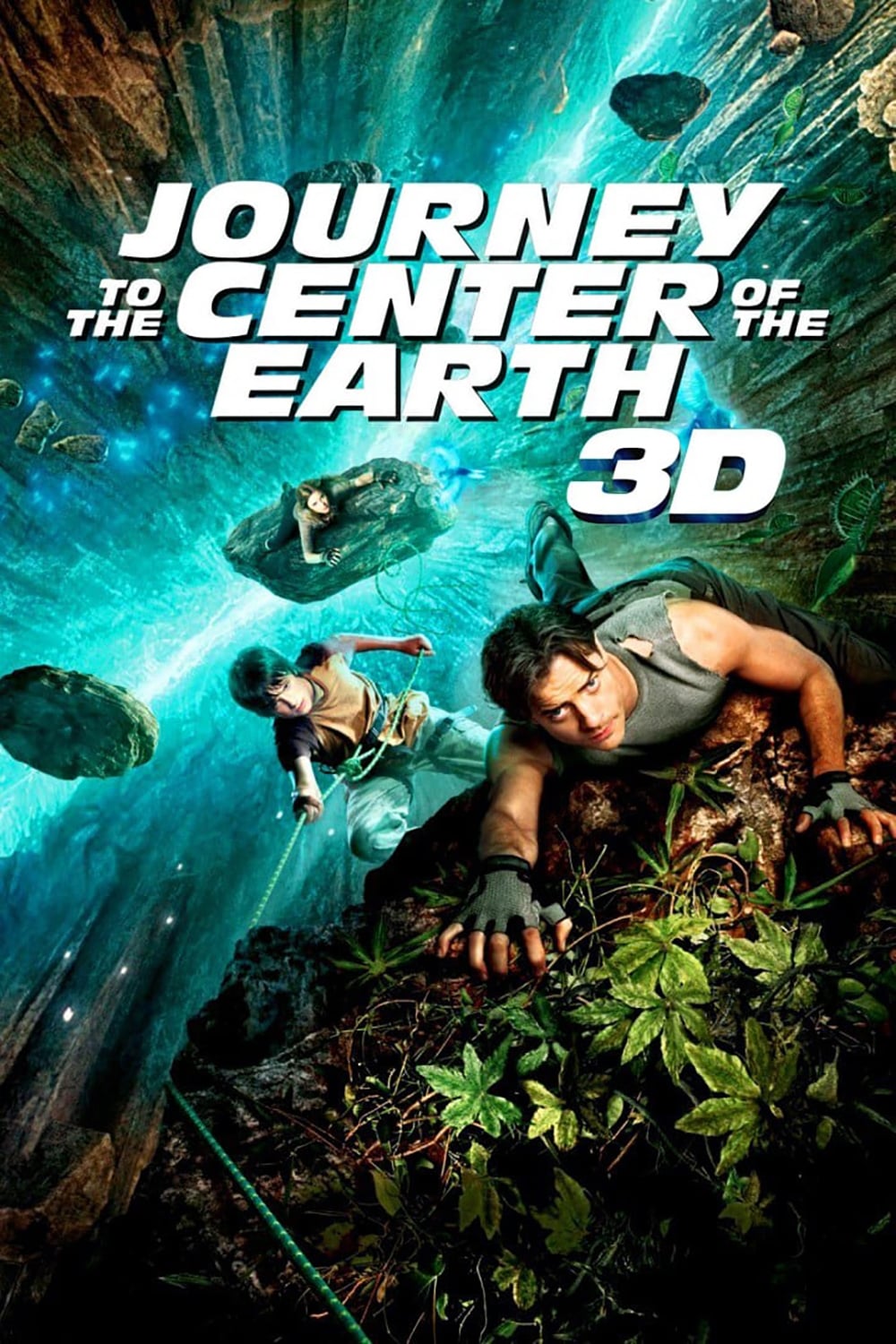Imagine standing at the edge of a gaping chasm, the air thick with the smell of sulfur and the earth humming with an unseen power. This isn’t some fictional scene from Jules Verne’s classic novel; it’s a reality waiting to be explored – a reality hidden deep beneath the surface of our planet. We’ve ventured into space, scaled the world’s highest peaks, and charted the ocean’s depths. But the journey to the Earth’s core remains one of the most elusive and perilous adventures humanity has yet to undertake.

Image: www.themoviedb.org
This article isn’t just about the science of our planet’s internal structure, though we’ll delve into that as well. It’s about the human desire to push boundaries, to unlock the secrets of the unknown. It’s about the allure of the deep, the primal yearning to understand the very foundation on which we stand. It’s about the quest to answer the age-old question: what lies at the heart of our world?
The Layers of Our World
The Earth isn’t a solid, monolithic sphere. It’s a complex, layered system, each layer with its own distinct properties and secrets.
-
The Crust: This is the outer layer, the one we walk, build upon, and mine. It’s thin, relatively speaking, around 3-50 kilometers thick, like the skin of an apple. The crust is divided into oceanic and continental crust, with the oceanic crust being denser and thinner.
-
The Mantle: This is the thickest layer, encompassing roughly 84% of the Earth’s volume. It’s mostly solid rock but behaves like a very viscous fluid over long periods, the reason why tectonic plates can move. The mantle is further divided into the upper mantle, which includes the rigid lithosphere that forms the tectonic plates, and the lower mantle, which flows more easily.
-
The Outer Core: This is a liquid layer composed primarily of iron and nickel, swirling with intense heat and powerful electric currents, generating a magnetic field that protects us from the harmful radiation of the sun.
-
The Inner Core: This is the Earth’s heart, a solid sphere of iron and nickel, about 1,220 kilometers in diameter. The pressure at the core is immense, more than three million times the pressure at sea level, creating a solid state despite the extreme heat.
Unraveling the Mysteries
How do we know all this? Scientists have developed ingenious methods to peek beneath the Earth’s surface.
-
Seismic Waves: Earthquakes are the result of sudden releases of energy within the Earth’s crust. These releases produce waves that travel through the planet’s interior, called seismic waves. By studying how these waves travel, scientists can map the layers of the Earth and determine their composition.
-
Volcanoes: Fiery eruptions from volcanoes provide a glimpse into the mantle, carrying up samples of the molten rock and gases contained within.
-
Meteorites: Studying meteorites that contain minerals similar to those found in the Earth’s core helps scientists understand the composition and formation of our planet’s center.
-
Laboratory Experiments: Scientists recreate the high pressures and temperatures found in the Earth’s interior in laboratories, studying how materials behave under these extreme conditions.
The Journey Begins
While we can’t physically travel to the Earth’s core, we can still embark on a virtual journey, guided by the data and models these scientific methods provide. Imagine descending through the layers of our planet, witnessing firsthand the changes in temperature, pressure, and composition.
-
The Crust: We begin our descent through the familiar world of rocks, minerals, and soil, a world teeming with life. As we go deeper, the temperature steadily rises, reaching over 1500°C at the boundary between the crust and the mantle.
-
The Upper Mantle: The journey continues through the solid but flowing mantle, the landscape becoming increasingly alien and unforgiving. The pressure increases, reaching about 100,000 times the pressure at sea level.
-
The Lower Mantle: The molten rock of the lower mantle flows more easily, creating a turbulent, magma-filled world. Here, temperatures reach over 3500°C, hot enough to melt most rocks.
-
The Outer Core: We finally reach the liquid core, a blindingly bright, swirling sea of iron and nickel. This is the birthplace of our planet’s magnetic field, protecting us from the ravages of solar radiation.
-
The Inner Core: Our journey culminates at the heart of the Earth, a solid sphere of iron and nickel, compressed by immense pressure. The temperature here is estimated to be around 5200°C, hotter than the surface of the Sun.
:format(jpeg):mode_rgb():quality(90)/discogs-images/R-3745466-1342647625-6987.jpeg.jpg)
Image: www.cdandlp.com
The Future of Exploration
Technology is constantly evolving, opening up new possibilities for exploring the Earth’s interior. Scientists are working on developing more sophisticated seismic imaging techniques, designing probes capable of withstanding extreme temperatures and pressures, and even exploring the use of lasers to create small openings in the Earth’s crust. The future may hold the key to unlocking the secrets that lie at the heart of our planet.
Journey To The Center Of The Earth Full
The Significance of the Journey
This journey, both real and virtual, is not just about scientific exploration. It’s about pushing the boundaries of human knowledge, deepening our understanding of the planet that sustains us. It encourages us to ask bigger questions, to appreciate the interconnectedness of all things, and to recognize that we are not just inhabitants of this planet, but a part of it.
We may never be able to physically journey to the center of the Earth, but by continuing to explore, learn, and innovate, we can come closer than ever to understanding the incredible world that lies beneath our feet.






